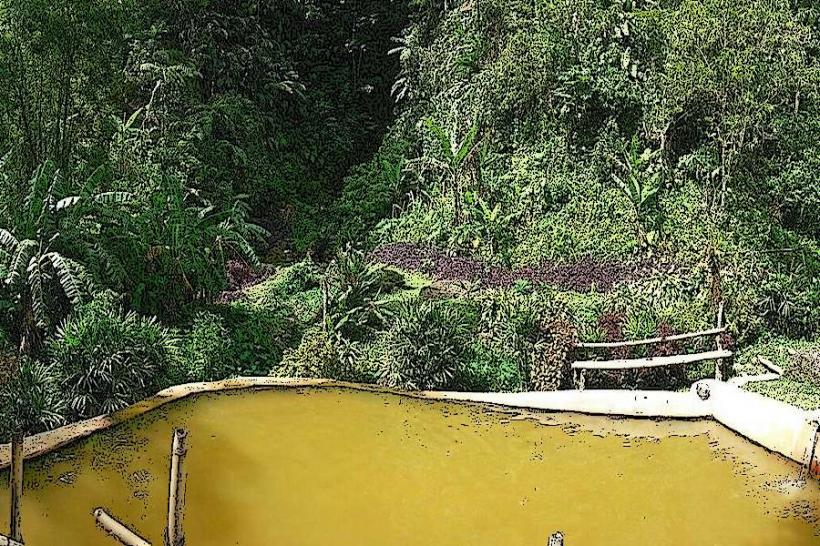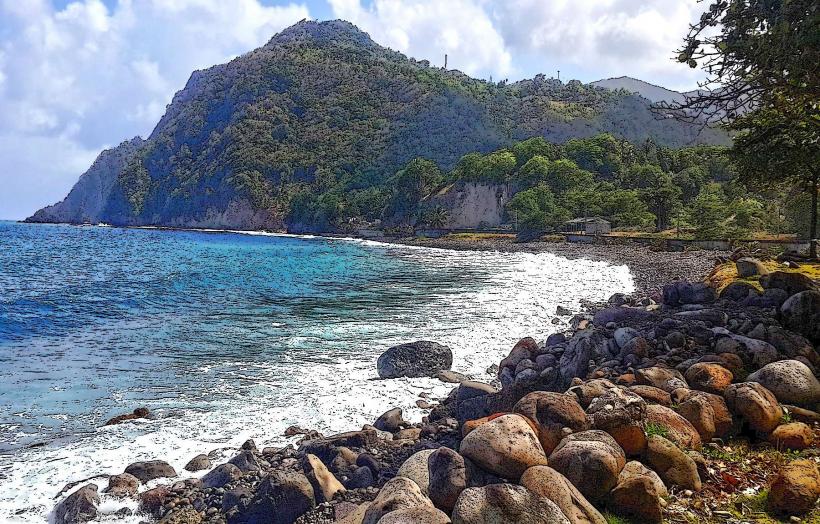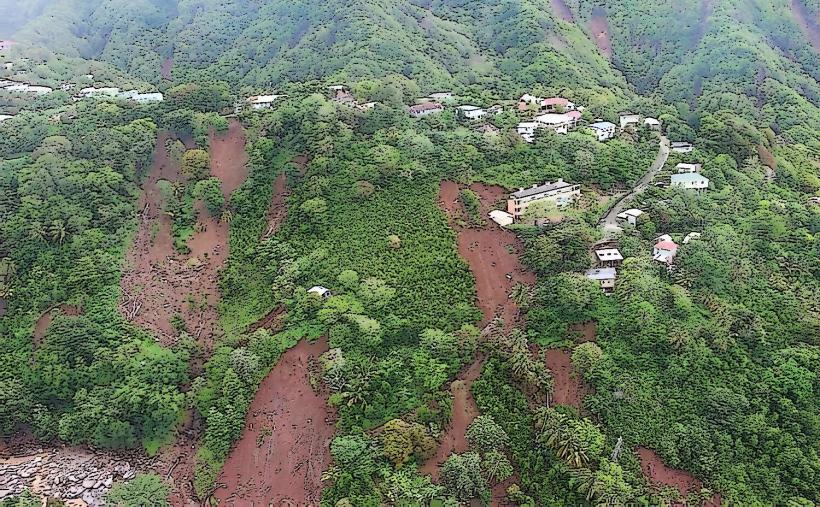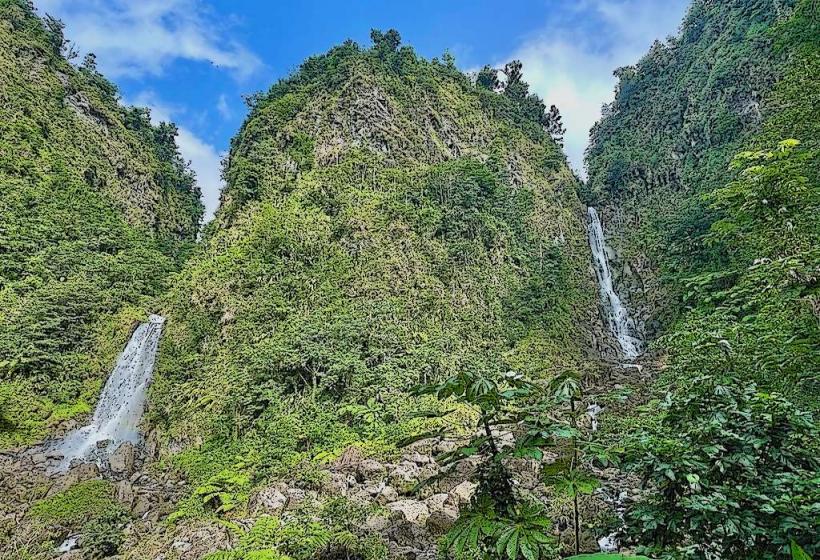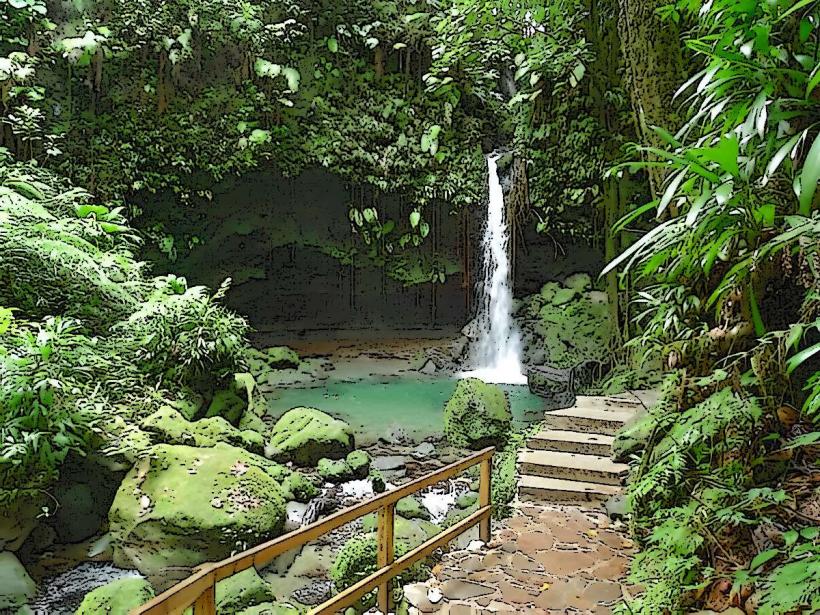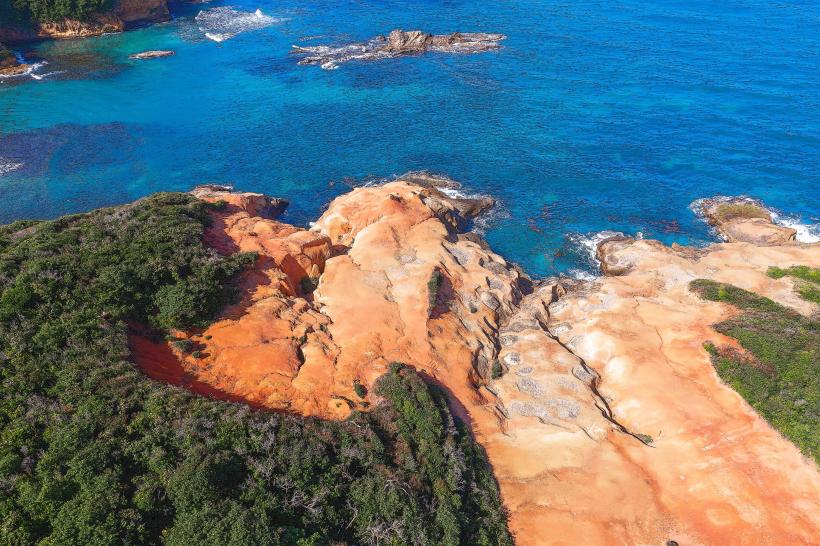Information
Landmark: Morne Diablotin National ParkCity: La Plaine
Country: Dominica
Continent: North America
Morne Diablotin National Park, La Plaine, Dominica, North America
Overview
In Dominica’s far north, Morne Diablotin National Park remains one of the island’s most untouched treasures, where rain drips from giant ferns and rare wildlife thrives, moreover the park, founded in 2000, was designed to safeguard the Imperial Amazon Parrot-called the Sisserou by locals-along with other species found nowhere else, and to preserve the lush, tangled biodiversity that thrives in the region, slightly It takes its name from Morne Diablotin, Dominica’s tallest peak, which rises 1,447 meters (4,747 feet) into the cool mountain air, furthermore let’s take a closer behold at the park: spanning about 8,700 acres of lush tropical rainforest and cool montane forest, it’s anchored by Morne Diablotin-the island’s highest peak and the second tallest in the Lesser Antilles.Steep slopes tumble into deep valleys, and the thick green canopy hums with hidden life, drawing hikers and nature lovers alike, also as part of the Eastern Caribbean Forests ecoregion, Morne Diablotin National Park shelters an extraordinary variety of plants and animals.To be honest, The park’s plant life ranges from lowland rainforest, where towering gommier and bwa mang trees rise in the humid air, to misty montane and elfin woodlands draped in moss and dotted with orchids and ferns adapted to cooler, cloud-covered slopes, on top of that it also shelters rare species found nowhere else, like the Dominican magnolia.Frankly, Wildlife thrives here too, especially birds, including the critically endangered Imperial Amazon parrot-Dominica’s Sisserou-hidden deep in the dense forest, as well as you’ll spot the red-necked parrot-known locally as the Jaco-on Dominica’s flag and, if you’re lucky, flitting through the park’s trees; it’s smaller than the Sisserou but just as striking.The area teems with life: flycatchers dart after insects, thrushes sing at dawn, hummingbirds hover over wildflowers, and warblers flash through the canopy, also agoutis rustle in the undergrowth, bats swoop at dusk, and lizards bask on warm rocks.Frogs call from hidden pools, including the rare Mountain Chicken Frog, now critically endangered, and for those who like a challenge, the Morne Diablotin Trail climbs steeply to the island’s highest peak.The round trip takes about six to seven hours, winding through dense green forest and over steep ridges, in addition the Syndicate Nature Trail is easier, a favorite for birdwatchers hoping to glimpse the Imperial Amazon Parrot or other rare species, moderately This trail lies within the Syndicate Parrot Reserve, one of the finest places to detect Dominica’s two endemic parrots, not only that towering trees and misty valleys make it a dream for nature photographers.Morne Diablotin National Park also safeguards much of the island’s precious water supply, also rivers and streams flow from Morne Diablotin National Park, supplying fresh water to nearby communities, while its forests store carbon and shield the land from climate change.Home to rare and endangered species, the park teems with life, from rustling palm fronds to the flash of a parrot’s wings, in turn its name, “Diablotin,” comes from the French for “little devil,” a nod to the eerie night calls of certain birds or the rugged terrain, loosely For the Kalinago people, these ancestral lands hold deep spiritual and cultural meaning, consequently just 45 minutes from Roseau, the park is reached through the Syndicate Visitor Center, where you can pick up maps or arrange a guide.December to April brings dry trails, ideal for birdwatching and long hikes, in turn wear sturdy boots, pack water, snacks, and insect repellent, and bring binoculars for a closer view at wildlife.A local guide can help you spot the elusive parrots, on top of that respect the environment by leaving no trace.With its blend of wild beauty, cultural heritage, and rich biodiversity, Morne Diablotin is a rare treasure for eco-tourists exploring Dominica.
Author: Tourist Landmarks
Date: 2025-09-11

